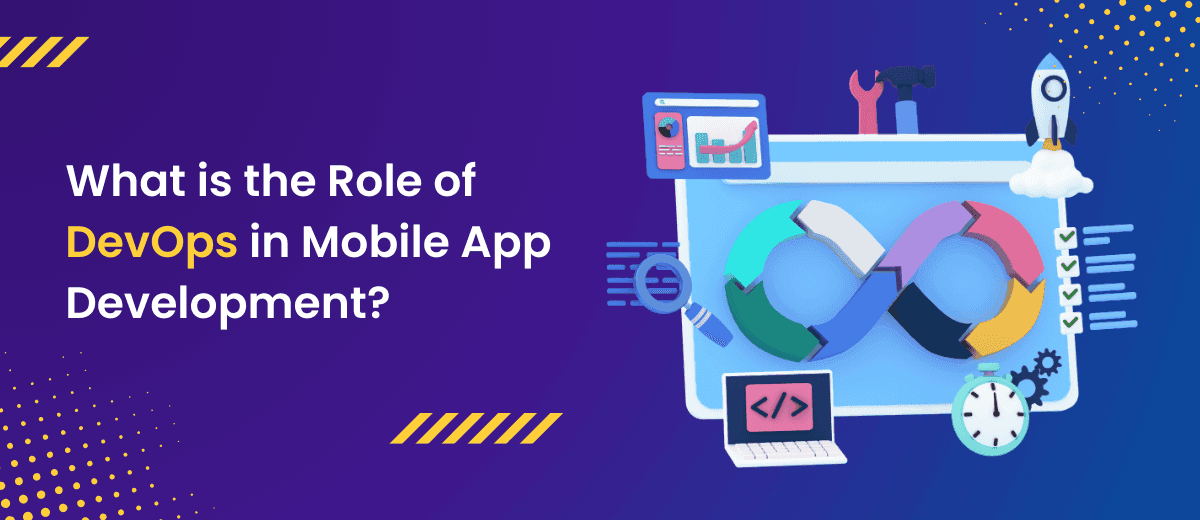- 3rd Jan, 2025
- Aarav P.
SaaS Practices: A Guide to Seamless Cloud Software Adoption
6th Dec, 2023 | Rinkal J.
- Software Development

Remember when we discussed about Software as a Service (SaaS) in our last article?
Well, guess what?
It's not just a methodology anymore—it's like a must-have in the business world.
In this article, we're going to dive into why SaaS is not just a choice but a total game-changer.
We'll delve into the key SaaS implementation best practices that can ensure a seamless transition to cloud-based solutions
SaaS solutions offer unprecedented flexibility, scalability, and accessibility, empowering organizations to streamline their operations and enhance productivity.
Benefits of Moving to a SaaS Model
Amidst the traditional models of software deployment, SaaS stands out as a transformation, bringing forth a multitude of benefits that resonate across industries.
According to Statista Market Insights, revenue in the SaaS market indicates a climb to $277.70 billion in 2024 and a substantial increase to $344.0 billion by 2027.

Let's explore how the paradigm shift to a SaaS model is not merely a technological evolution but a strategic leap towards a more flexible, cost-efficient, and collaborative future.
1. Flexibility and Scalability
One of the standout advantages of SaaS is its unparalleled flexibility. Businesses can scale their software usage up or down based on their needs, paying only for what they use.
This elasticity enables organizations to adapt quickly to changing market conditions, ensuring that their software infrastructure grows seamlessly alongside their operations.
2. Cost-Effectiveness
Traditional software models often require a significant upfront investment in licenses and infrastructure. SaaS, on the other hand, operates on a subscription basis, spreading costs over time.
This not only makes it more accessible for small and medium-sized enterprises but also allows businesses to allocate resources more efficiently, redirecting capital towards innovation and growth.
3. Automatic Updates and Maintenance
In a SaaS model, software vendors handle updates and maintenance, ensuring that users always have access to the latest features and security patches.
This not only saves valuable time and resources for businesses but also mitigates the risk of using outdated or vulnerable software.
4. Enhanced Collaboration
With SaaS, collaboration becomes seamless. Teams dispersed across the globe can collaborate in real time on shared documents, projects, and data, fostering a culture of innovation and efficiency.
This collaborative advantage can be a game-changer in today's interconnected and fast-paced business environment.
5. Accessibility and Anytime, Anywhere Availability
The cloud-based nature of SaaS means that users can access their applications from any device with an internet connection.
This not only promotes remote work but also ensures that crucial business applications are accessible 24/7, enhancing productivity and responsiveness.
6. Improved Security
SaaS providers prioritize security, implementing robust measures to protect user data and sensitive information.
This typically involves implementing encryption, employing multi-factor authentication, and conducting routine security audits. By leveraging the expertise of SaaS providers, businesses can enhance their overall cybersecurity posture.
SaaS Implementation Best Practices
SaaS has emerged as a game-changer for businesses seeking efficiency, flexibility, and scalability. The decision to adopt SaaS is just the first step on a transformative journey.
To adapt to a seamless transition and unlock the full potential of SaaS solutions, organizations must adhere to best practices during the implementation process.
1. Thorough Assessment and Planning
Before diving into SaaS implementation, organizations must conduct a comprehensive assessment of their needs, objectives, and existing infrastructure.
This involves identifying key stakeholders, understanding user requirements, and evaluating the compatibility of the chosen SaaS solution with the current IT landscape. A well-thought-out plan serves as the foundation for a successful implementation journey.
2. Selecting the Right SaaS Solution
Choosing the most suitable SaaS solution is a critical decision that impacts the success of the implementation.
Factors such as functionality, scalability, security, and vendor reputation should be carefully evaluated. The chosen solution should align with the organization's long-term goals and be capable of adapting to evolving business needs.
3. Data Migration Strategies
Smooth data migration is often a significant challenge during SaaS implementation.
Organizations should establish clear data migration strategies, ensuring the seamless transfer of data from existing systems to the new SaaS solution.
This process requires meticulous planning to avoid disruptions and data integrity issues.
4. Integration with Existing Systems
SaaS solutions rarely exist in isolation. Integrating the new software with existing systems is crucial for achieving a unified and efficient workflow.
APIs (Application Programming Interfaces) play a vital role in facilitating seamless communication between different software applications. Organizations should prioritize interoperability to maximize the benefits of their SaaS investment.
5. User Training and Adoption
A successful SaaS implementation hinges on user acceptance and proficiency. Training programs should be designed to familiarize users with the new system, emphasizing its benefits and features.
Ongoing support and communication are essential to address user concerns and ensure a smooth transition.
6. Security and Compliance
Security is a top priority in today's digital landscape. Organizations must prioritize SaaS solutions that adhere to industry standards and compliance requirements.
Implementing robust security measures, such as encryption, access controls, and regular audits, is essential to safeguarding sensitive data and maintaining regulatory compliance.
7. Performance Monitoring and Optimization
Post-implementation, organizations should actively monitor the performance of their SaaS solution.
Regular assessments and performance reviews help identify potential issues, optimize system efficiency, and ensure that the software continues to meet evolving business requirements.
8. Scalability and Future-Proofing
SaaS solutions should be chosen with scalability in mind. As businesses grow, the software must seamlessly accommodate increased user loads and data volumes.
Future-proofing the SaaS implementation involves selecting solutions that can evolve with the organization and adapt to emerging technologies.
Conclusion
The benefits of adopting a SaaS model extend beyond cost savings, touching on every aspect of organizational efficiency.
However, success in the world of SaaS is not guaranteed; it requires careful planning, collaboration, and a commitment to continuous improvement.
As organizations embrace the future, the journey toward SaaS implementation becomes a strategic imperative.
By defining clear objectives, selecting the right vendors, and adhering to best practices, businesses can unlock the full potential of SaaS, transforming challenges into opportunities and melodies into symphonies of success.
In a world where agility is paramount, SaaS is not just a software model—it's the soundtrack of innovation, collaboration, and sustainable growth.
FAQs
1. How does SaaS differ from traditional software models?
A: Unlike traditional software models where software is purchased and installed locally, SaaS operates on a subscription basis, providing on-demand access to applications hosted in the cloud.
2. What is the advantage of the cloud-centric approach in SaaS?
A: The cloud-centric approach eliminates the need for complex installations and constant updates, offering a streamlined, user-friendly experience.
3. Is SaaS secure?
A: SaaS providers invest heavily in security measures to protect user data. They often employ encryption, regular security audits, and compliance with industry standards to ensure the confidentiality and integrity of information.
4. Can SaaS applications be customized?
A: Many SaaS applications offer customization options to meet specific business needs. While extensive customization may depend on the platform, users can often configure settings, workflows, and integrations.
5. What is the role of integrations in SaaS?
A: Integrations in SaaS allow users to connect their software with other tools and services, enhancing functionality and streamlining workflows. Common integrations include those with CRM systems, marketing tools, and productivity apps.
6. How does data migration work in SaaS?
A: SaaS providers often offer tools and assistance for migrating data from existing systems to their platform. This process may involve importing data in common formats or integrating with other software solutions.
7. Can SaaS applications be accessed offline?
A: While SaaS applications primarily operate online, some offer offline functionality with limitations. Users may be able to access certain features or work on files offline, with changes syncing once they regain an internet connection.
8. What industries commonly use SaaS?
A: SaaS is prevalent across various industries, including but not limited to, finance, healthcare, education, marketing, and customer relationship management (CRM). Its versatile nature allows it to adjust to a diverse array of business requirements.
9. How does AI enhance SaaS applications?
A: AI elevates SaaS applications by automating insights, personalizing user experiences, enabling predictive analytics, integrating chatbots for support, automating repetitive tasks, implementing natural language processing, enhancing security through real-time threat detection, facilitating continuous learning, and optimizing resource allocation.
This integration not only streamlines workflows, improves efficiency, and ensures data security but also provides users with a more intuitive and adaptive software experience.
More blogs in "Software Development"
- 7th Jan, 2025
- Arjun S.
How to Develop an App Like Snapchat: Ultimate Guide for 2025
- 25th Dec, 2024
- Rinkal J.
E-Learning Platform Development: Build an App Like Coursera
Join our Newsletter
Get insights on the latest trends in technology and industry, delivered straight to your inbox.









